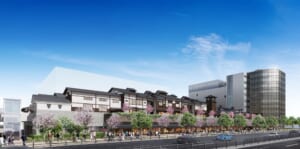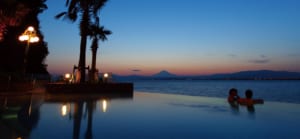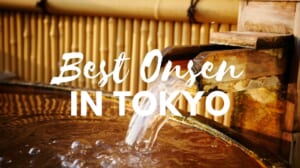Best Sento in Tokyo
Tokyo’s Top Public Bathhouses, The Best of Tradition and Modern Comfort
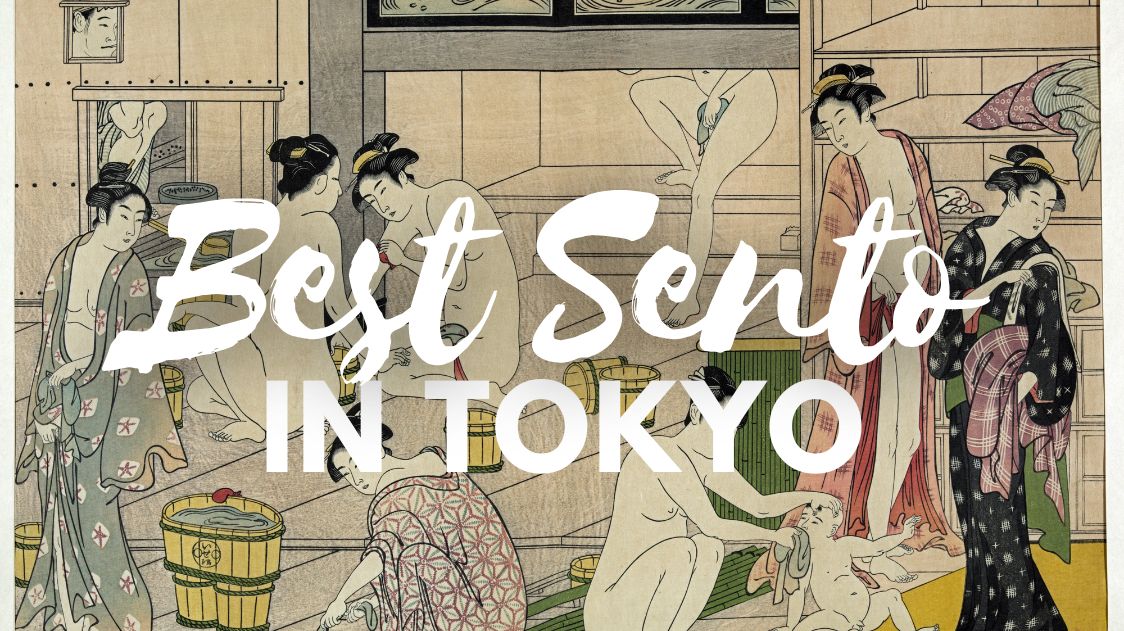
Public bathhouses, or sento, hold a unique place in Japanese culture, creating not just a place to bathe but a community space with deep historical roots. In contrast to onsen, which use geothermally heated natural spring water, sento typically provide heated tap water, often enriched with minerals or bath salts. These neighborhood hubs have evolved from necessities of daily life into cherished locales for relaxation and socialization.
For this list, I considered sento which capture the essence of Japanese bathhouse culture while adapting to modern tastes. Through innovative designs, nostalgic architecture, or their ability to create a sense of escapism in the heart of the metropolis, these spots showcase the lasting appeal of sento. Each offers something special, from thoughtful interiors and artistic touches to high-quality bathing facilities, making them the perfect introduction to Tokyo’s contemporary and traditional sento experiences. The best part? They’re all quite affordable, under 550 yen (not including towel rental if you don’t carry one)!
See also: Guide to Sento: Understanding Japanese Bathhouses
1. Koganeyu (Sumida)
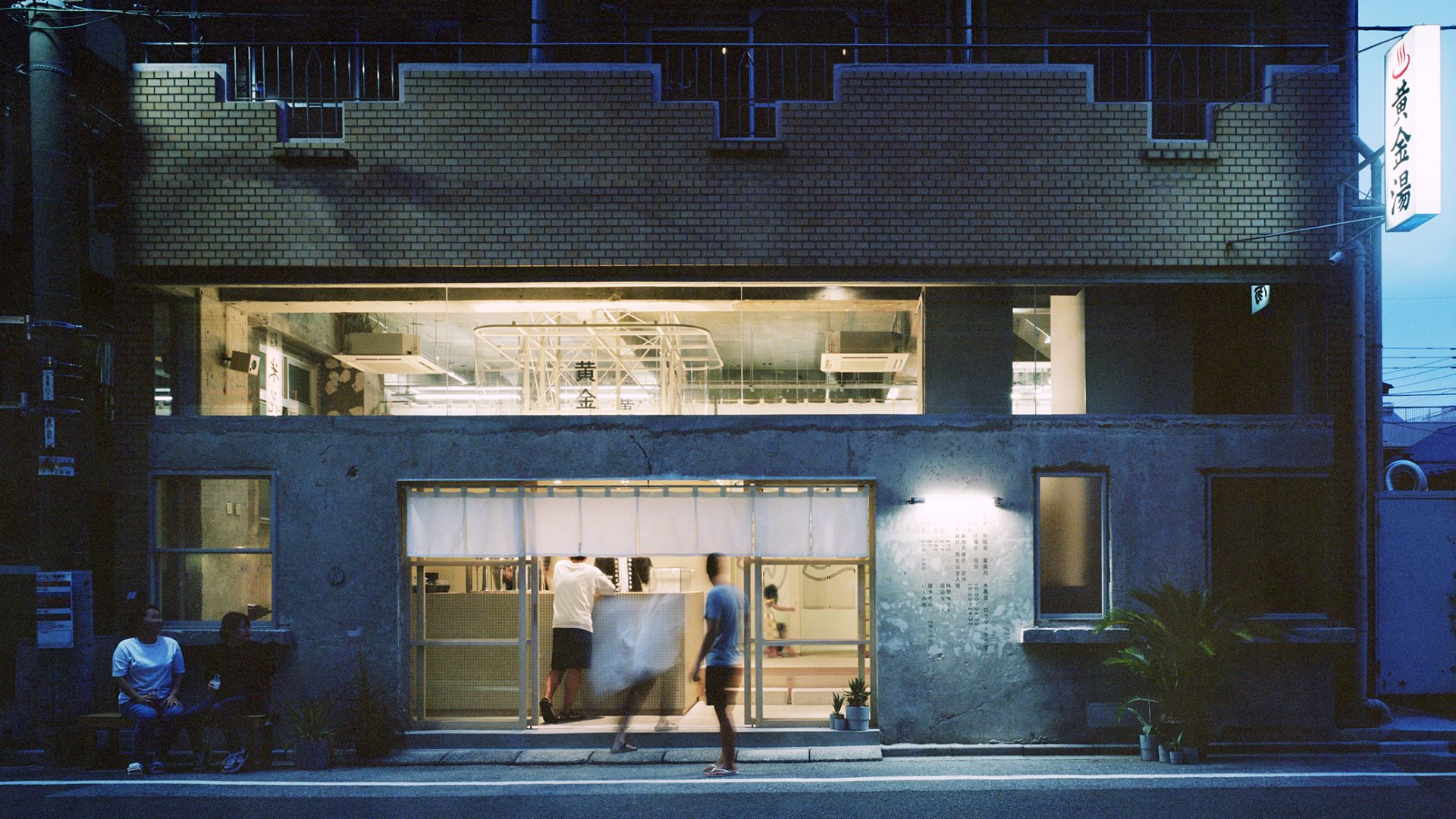
Koganeyu (黄金湯), a sento dating back to 1932, underwent a remarkable transformation in 2020 thanks to architect Jo Nagasaka, adding a modern twist to its historical charm. Upon entering, you’re greeted by a spacious bath area offering four distinct options: a piping hot jet bath, a rotating herbal bath, a high-concentration carbonated bath, and a cold plunge pool. The saunas add another layer of appeal, with the women’s sauna featuring hinoki wood and the men’s crafted from hiba wood and bakuhanseki stone.
After a soak, step into the bantai bar, where you can enjoy craft beer or homemade non-alcoholic drinks. This integration of tradition and contemporary leisure sets Koganeyu apart. The communal bathing experience is further elevated by a shared mural of Mt. Fuji by artist Yoriko Hoshi. Here, you can enjoy a mix of relaxation, artistry, and rejuvenation, all within a sento that bridges the past and present effortlessly.
Map
Official Website
2. Daikokuyu (Sumida)
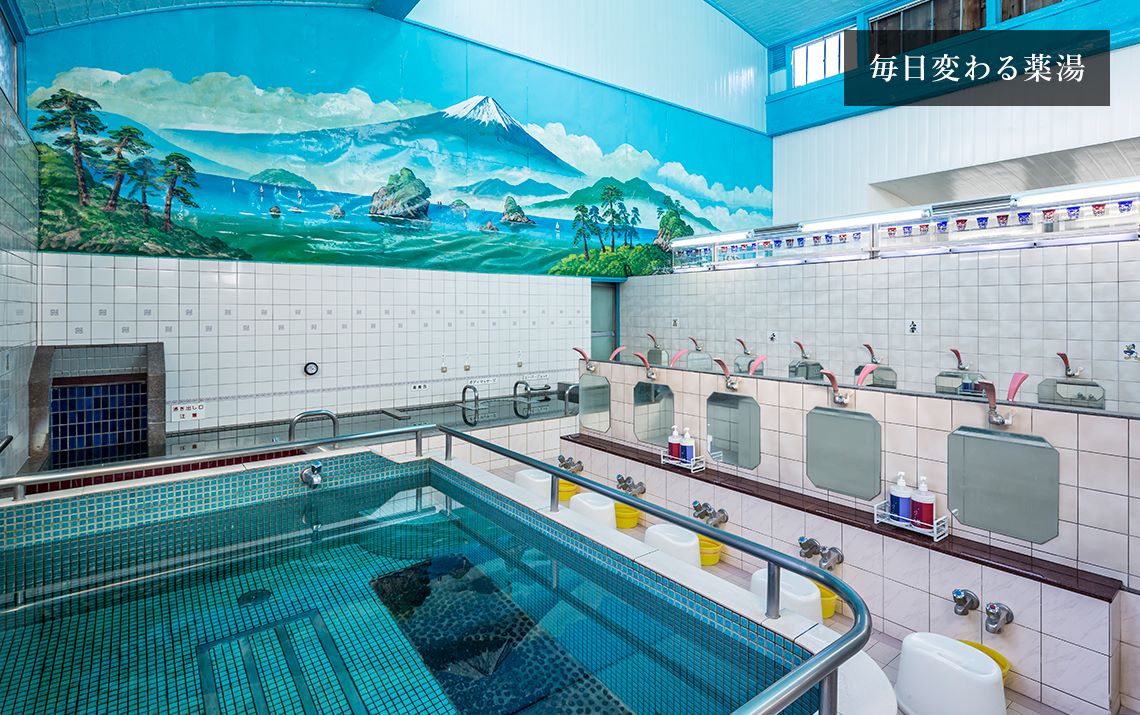
Located near Tokyo Skytree, Daikokuyu (大黒湯) has been a staple of the Sumida Ward community since 1949. Following its 2014 renovation, this sento retained its nostalgic essence while introducing modern touches like a stylish wooden deck and an impressive array of bathing options. The spacious bathhouse features a variety of tubs, including massage baths, walking baths, and a large outdoor bath with views of both Daikokuyu’s iconic chimney and Skytree’s towering spire.
Unique touches abound. The mural of Mt. Fuji, painted by master artist Mizuki Tanaka, is a standout. The vibrant colors and timeless design are a reminder of sento artistry at its finest. Saunas are available on a rotating schedule, with steam salt saunas as a rare treat. Open late into the night and early in the morning, Daikokuyu is perfect for visitors seeking relaxation after sightseeing or a peaceful break during unconventional hours.
Map
Official Website
3. Kosugiyu (Suginami)
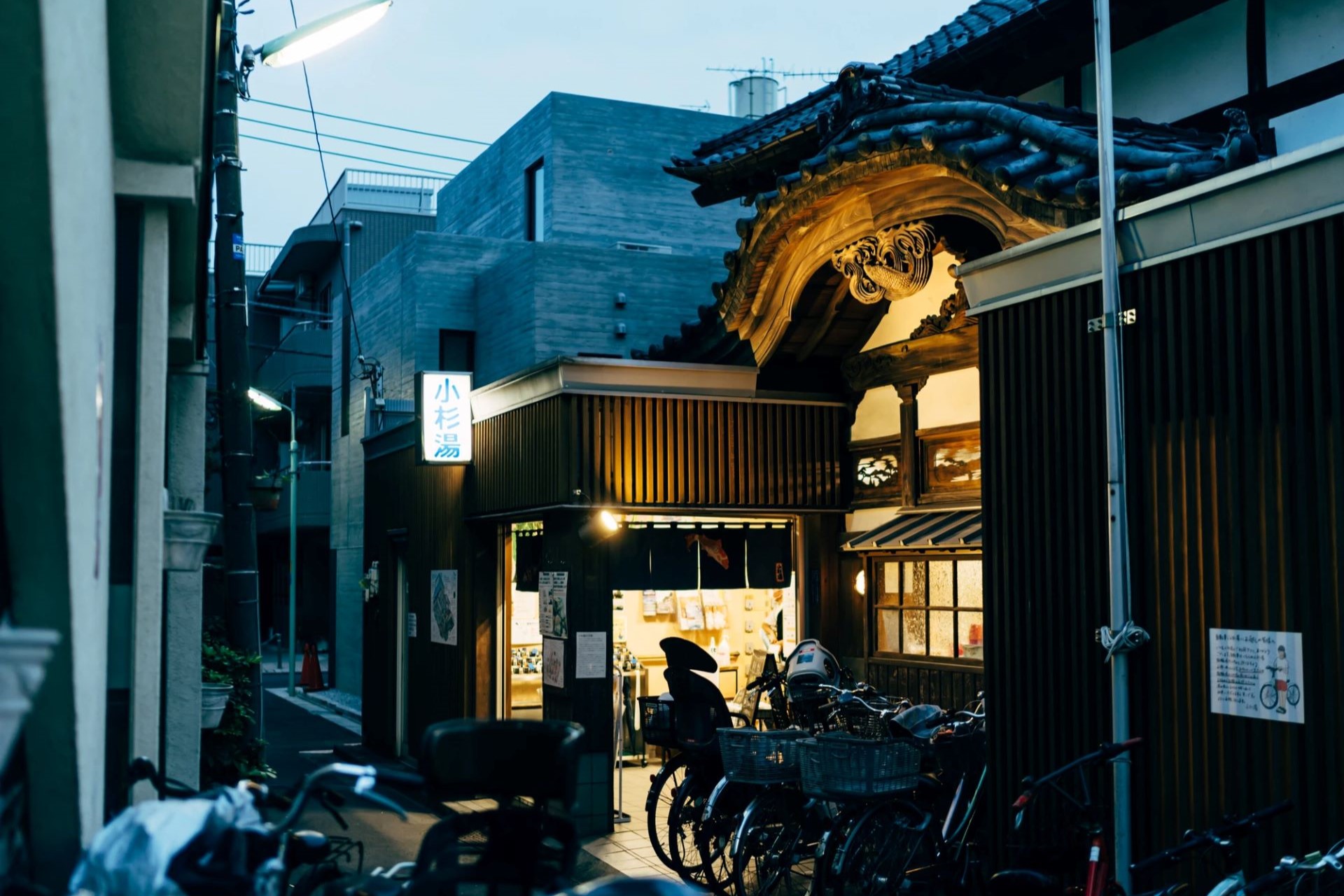
Kosugiyu (小杉湯) is a true neighborhood gem, tucked away in the lively streets of Koenji. Operating since 1933, this sento has become a beloved institution for locals and the casual visitors who are lucky enough to discover it. Its distinctive features include its famed milk bath, known for its subtly sweet aroma and velvety texture. The mural of Mt. Fuji, painted by master sento artist Morio Nakajima, adds a touch of artistic grandeur to the experience.
The bathhouse exudes vintage charm with its latticed ceilings and retro fittings, such as antique scales and traditional dryers. This skillful integration of old and new makes Kosugiyu a standout among Tokyo’s sento. A large selection of manga in the rest area invites visitors to linger, making it more than just a quick visit. With events and thoughtful details, Kosugiyu has earned its reputation as the “holy land” of hot-and-cold alternating baths, attracting devoted fans from all over.
Map
Official Website
4. Haginoyu (Taito)
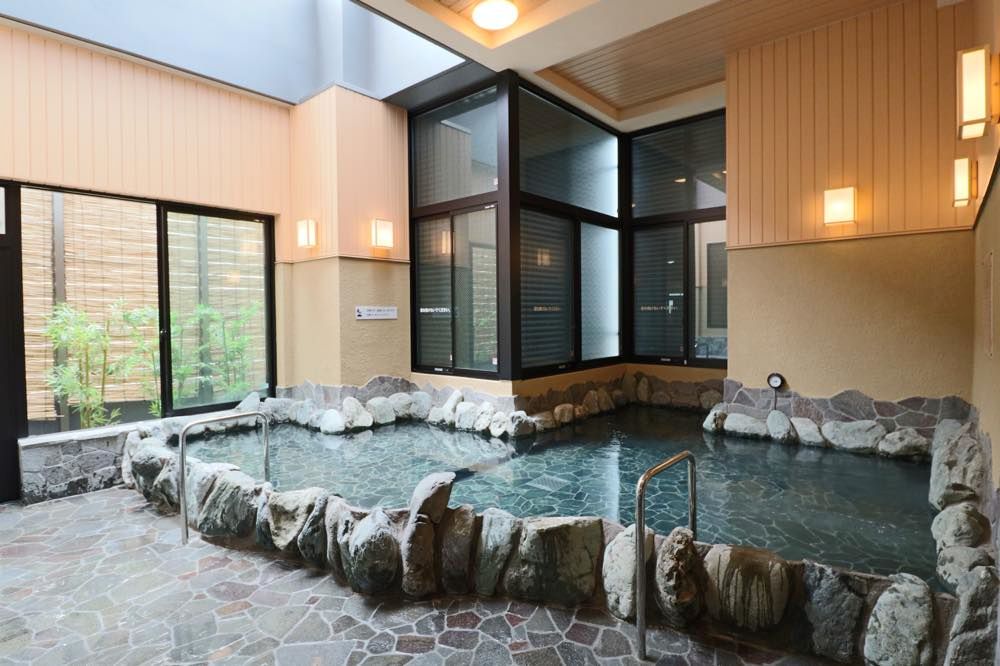
Haginoyu (萩の湯) stands out as one of Tokyo’s largest sento, occupying four expansive floors in the heart of Uguisudani. Renovated in 2017, this towering bathhouse seamlessly combines functionality with comfort. Each gender is assigned an entire floor, ensuring a spacious and relaxing experience. The facilities are thoughtfully designed, featuring over 30 washing stations, a carbonated bath, a rock-lined outdoor bath, and unique options like an electric bath and daily rotating herbal baths.
For sauna enthusiasts, Haginoyu doesn’t disappoint. The women’s sauna offers a salt sauna and soft-water baths, while the men’s side includes a high-temperature bath and an oversized cold plunge pool. Beyond the bathing areas, the second-floor restaurant Komorebi is a destination in itself. With an extensive menu spanning Japanese, Western, and Chinese cuisines, it caters to every craving. Haginoyu combines convenience and indulgence, making it a must-visit for those seeking relaxation and great food in one spot.
Map
Official Website
5. Jujoyu (Kita)

Jujoyu (十條湯), established in 1948, carries the charm of post-war Japan while embracing modern sensibilities. Located in the vibrant Jujo district, this retro sento underwent a significant update in 2021, enhancing its facilities without losing its nostalgic soul. The bathing area offers a choice of four tubs: lukewarm, hot, a jet bath, and a mineral-rich cold bath sourced from underground water 150 meters below. The towering 3.5-meter mosaic murals, depicting cranes in the men’s bath and schools of fish in the women’s, create a striking visual experience.
A unique feature of Jujoyu is its adjoining café, Kissa Shinkai. Here, visitors can enjoy a post-bath snack, a refreshing drink, or even a cocktail. The café’s cozy atmosphere and diverse menu make it a rare gem among Tokyo’s sento. Regular sauna events, including löyly and herbal-infused sessions, add a touch of variety, ensuring no two visits are ever quite the same.
Map
Official Website
https://www.instagram.com/jujoyu_sento/
6. Kairyoyu (Shibuya)
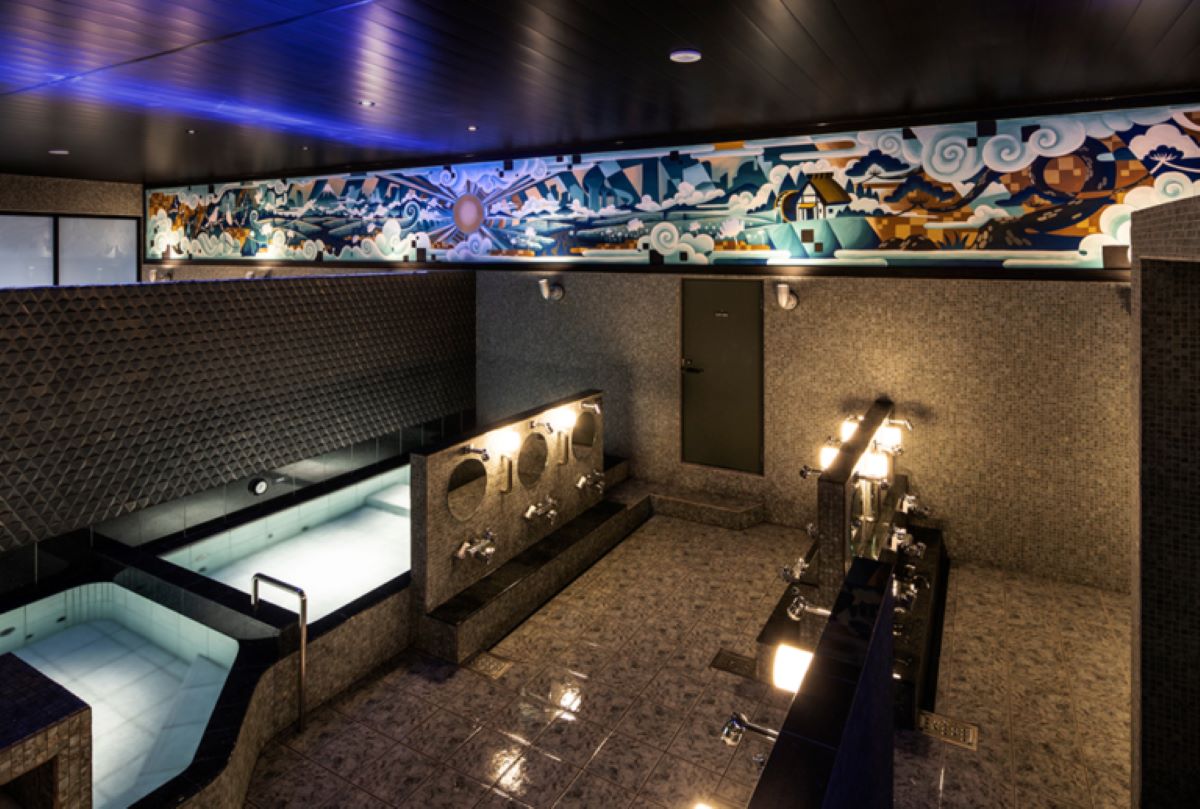
Kairyoyu (改良湯) is one of the best symbols of the evolving identity of Tokyo’s sento. Established in 1916, this Shibuya landmark has continuously reinvented itself, culminating in a sleek redesign in 2018 by architect Kentaro Imai. Its black-and-white exterior, adorned with a whale mural, hints at the stylish interiors within. The bathhouse offers soft-water baths that are gentle on the skin, including a carbonated bath and a comfortably warm soaking tub.
The saunas are another highlight. The men’s sauna features a convection system reminiscent of Finnish saunas, with automatic löyly sessions every 15 minutes, while the women’s sauna employs far-infrared technology for a soothing experience. Seasonal baths infused with Epsom salts or themed ingredients provide additional variety. Kaiyoyu’s emphasis on design and modern comfort attracts a diverse crowd, from Shibuya’s hip urbanites to travelers seeking a refined sento experience.
Map
Official Website
7. Bunka Yokusen (Meguro)

Bunka Yokusen (文化浴泉), a stylish sento in Ikejiri-Ohashi, is a triumph of thoughtful renovation. Also redesigned by architect Kentaro Imai, it adds modern aesthetics with traditional charm. Its standout feature is the striking wooden ceiling and mosaic murals, including a vivid Mt. Fuji painted by master muralist Morio Nakajima. These artistic touches reflect a commitment to preserving sento heritage while appealing to a contemporary audience.
The bathing options cater to diverse preferences. A nanobubble bath provides deep skin cleansing, while massage and cold baths offer therapeutic benefits. Swapping men’s and women’s sections daily ensures all visitors can experience the subtle variations in each area. The water, softened to remove calcium and magnesium, leaves skin feeling rejuvenated. Bunkayokusen’s sleek design, combined with its artistic and functional features, has earned it a devoted following.
Map
Official Website
https://www.bunkayokusen1010.com/
8. Komeisen (Meguro)

Tucked into the trendy Nakameguro district, Komeisen (光明泉) bridges the gap between a neighborhood sento and a modern-day spa. Architect Kentaro Imai’s 2014 renovation infused the space with minimalist elegance. The design is fresh and welcoming, with soft white tones and a rooftop rotenburo (open-air bath) that offers a rare city-center experience.
Bathing facilities include a massage bath, a carbonated bath, and a cold plunge, providing options for relaxation and rejuvenation. The women’s and men’s sides rotate weekly, so the availability to the open-air bath changes so it’s best to check the website in advance. Adding a creative twist, a colorful Mt. Fuji mural by graffiti artist Gravity Free adds vibrancy to the space. Kohmeisen combines tradition with modern sensibility, offering a peaceful retreat that aligns with Nakameguro’s chic atmosphere.
Map
Official Website
9. Sakaeyu (Shinjuku)
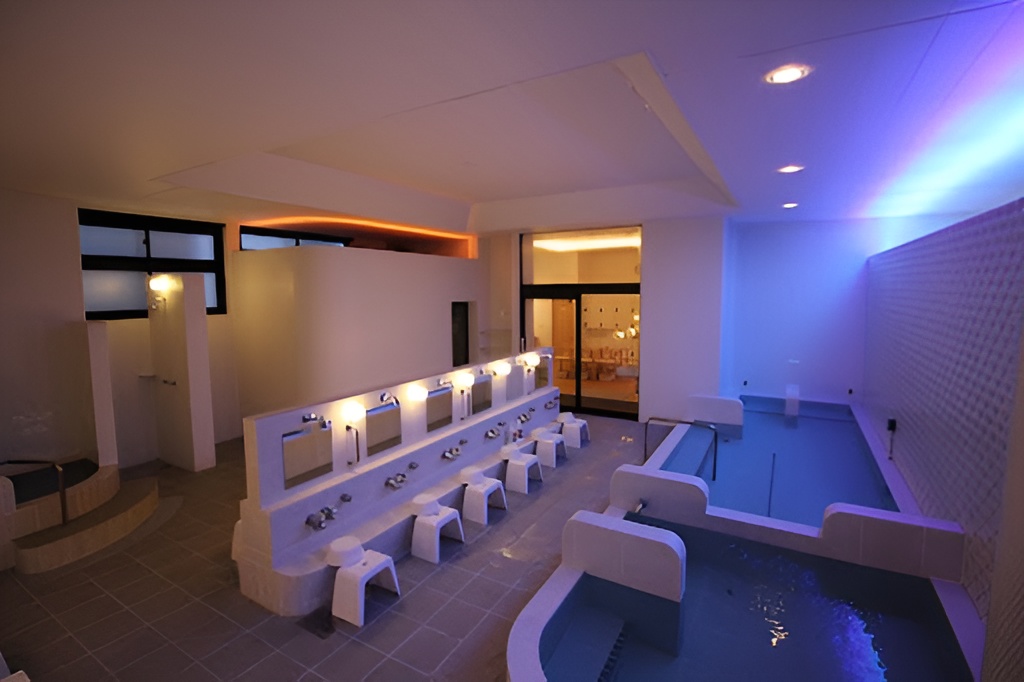
Sakaeyu (栄湯) in Shinjuku offers a luminous twist on the sento experience. Renovated in 2017, this bathhouse is celebrated for its innovative lighting design, which transforms the space into a visually soothing sanctuary. Each bathroom features a distinct ambiance, with one bathed in calming blue and another in lilac, creating a serene setting for relaxation, partially inspired by a nearby park with philosophical themes.
Facilities include a semi-open-air bath, a sauna, and uniquely artistic touches like a colorful Buddha mural painted on the ceiling. These elements combine to give Sakaeyu an otherworldly charm. The bathhouse also rotates men’s and women’s sections weekly, allowing all guests to experience the variety of lighting effects and layouts. Architect Kentaro Imai’s touch is evident in the balance of modern aesthetics with a traditional sento feel.
Map
Official Website
https://www.1010.or.jp/map/item/item-cnt-343
10. Mannenyu (Shinjuku)
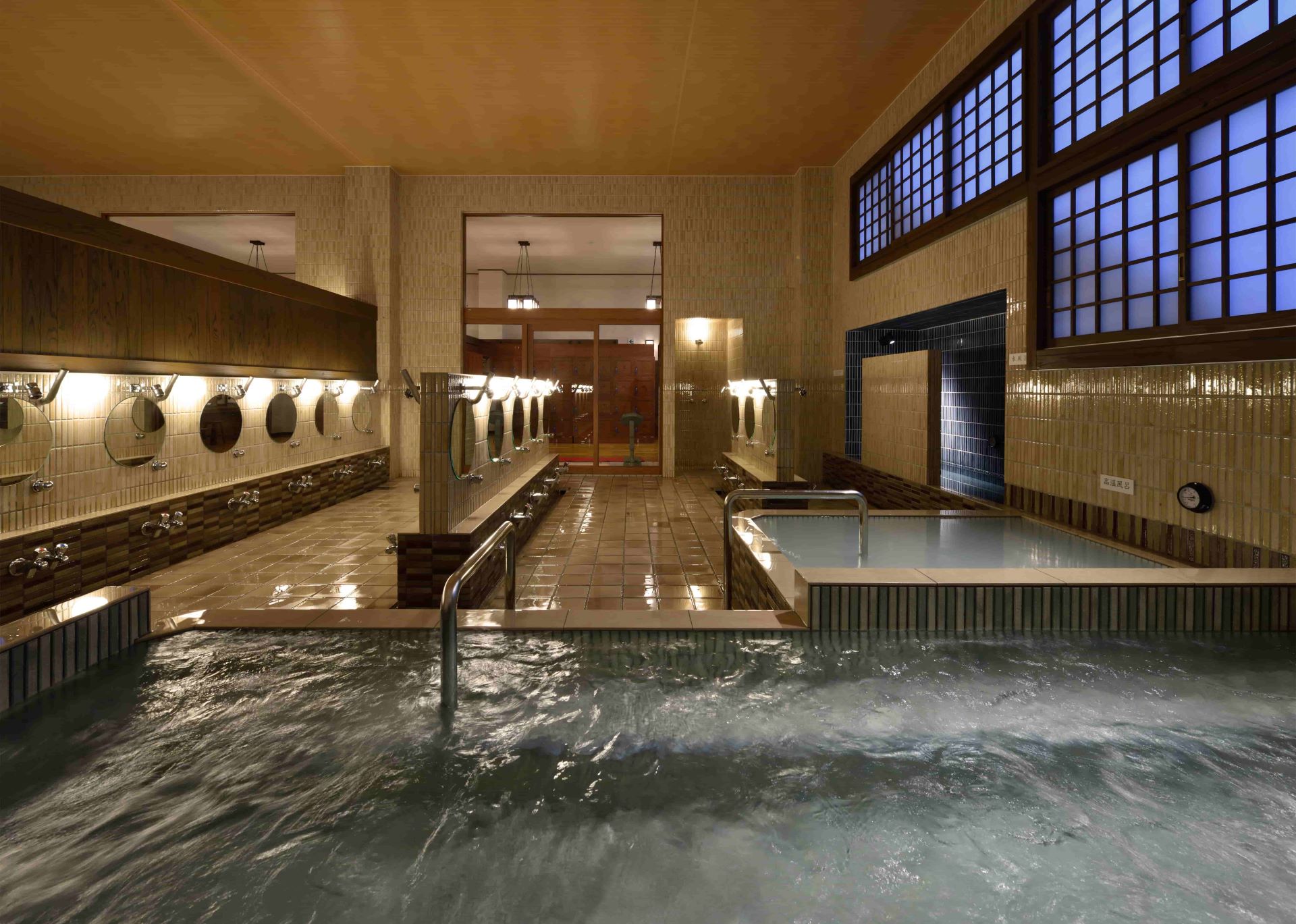
Mannenyu (万年湯), located in the vibrant Shin-Okubo area, is a compact yet striking sento that exudes understated elegance. This is also redesigned by renowned architect Kentaro Imai, featuring clean, linear aesthetics with a focus on functionality and comfort. Its main bath is thoughtfully designed to maximize space, offering ample room for soaking without feeling crowded. The water is maintained at a soothing 40°C, perfect for unwinding after a busy day.
Although Mannenyu lacks a sauna, it compensates with a hidden gem: an intimate cold plunge pool, cleverly secluded to create a sense of exclusivity. The meticulous layout even includes a dedicated shower space to prevent splashes, a small but thoughtful touch. Mannenyu is ideal for those seeking a peaceful retreat amidst the bustling streets of Shin-Okubo. Its harmonious design and welcoming atmosphere make it a perfect example of how sento can provide both physical and mental relaxation in a modern city.
Map
Official Website
▽Subscribe to our free news magazine!▽
For more information about local attractions and traveling in Japan, check these articles below, too!
▽Related Articles▽
Written by
Photographer, journalist, and avid urban cyclist, making sense of Japan since 2017. I was born in Caracas and lived for 14 years in Barcelona before moving to Tokyo. Currently working towards my goal of visiting every prefecture in Japan, I hope to share with readers the everlasting joy of discovery and the neverending urge to keep exploring.





